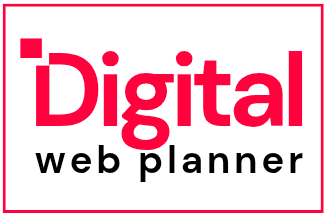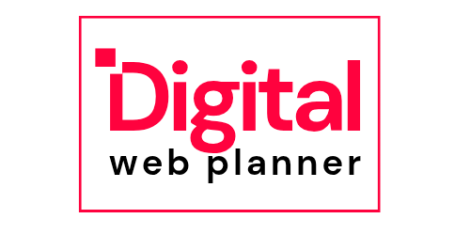
Graphic design
Graphic design is the art of creating visual content to communicate messages, using elements like typography, imagery, color, and layout. It plays a vital role in branding, marketing, and digital media, helping businesses visually connect with their audience.
Graphic design blends creativity with technical skills to create designs that are both visually appealing and functional. Whether it’s a logo, website, advertisement, or social media post, good design can leave a lasting impression and convey a brand’s identity effectively.

One of the key elements of graphic design is *typography*, the art of arranging text in a way that is both aesthetically pleasing and easy to read. Choosing the right font, size, and spacing can make a significant difference in how your message is perceived.
*Color theory* is another fundamental aspect of graphic design. Colors evoke emotions, influence moods, and communicate messages. For example, blue often conveys trust and professionalism, while red can represent excitement or urgency. Designers use color schemes to create harmony and balance within a design.
*Composition* refers to how elements are arranged within a design. A well-composed layout guides the viewer’s eye through the content, making it easier to understand and engage with. This includes decisions like alignment, spacing, and the use of grids to ensure a clean and organized design.
*Logo design* is one of the most crucial components of graphic design. A logo is the visual representation of a brand and serves as its identity. It must be unique, memorable, and versatile enough to be used across various mediums.

Another key aspect is branding, which involves creating a consistent visual identity for a company. This includes designing business cards, websites, packaging, and social media assets that all align with the company’s mission, values, and target audience.
User interface (UI) design is a specialized field of graphic design focused on creating visually intuitive and functional designs for digital interfaces. UI designers ensure that websites, apps, and software are easy to navigate and visually appealing, improving the overall user experience.
Web design is closely related to graphic design but involves designing websites specifically. It combines graphic design principles with web technologies to create visually attractive, functional, and responsive websites that offer a seamless user experience across devices.
Print design is another vital area of graphic design. It includes designing materials like brochures, flyers, posters, and business cards. Even in the digital age, print design remains important for offline marketing efforts and ensuring a professional brand image.
Infographics are a popular tool in graphic design to convey complex information visually. Using graphics, charts, and data visualization, infographics make it easier for the audience to digest information quickly and understand key messages.
A good graphic designer understands the importance of visual hierarchy—organizing elements in a way that guides the viewer’s attention to the most important parts of the design first. This can be achieved through font size, color contrast, and placement of key elements.
Photography and illustration also play an essential role in graphic design. High-quality images or custom illustrations can elevate the visual impact of a design and help tell a more compelling story. Graphic designers often work with photographers and illustrators to incorporate original artwork into their projects.
Vector design is a type of digital art that uses mathematical equations to create images. Vector graphics are scalable without losing quality, making them ideal for logos, icons, and illustrations that need to be resized for various purposes.
A graphic designer also needs to understand the principles of white space. White space, or negative space, is the empty space between design elements. It helps prevent clutter, enhances legibility, and gives the design room to “breathe.”
Animation is another form of graphic design used to bring designs to life. Through motion graphics and animated visuals, designers can create dynamic and engaging content for use in advertising, websites, and social media.
In today’s digital world, responsive design is crucial. Graphic designers must ensure that their designs look good and function properly across all screen sizes, from desktop computers to mobile devices. This ensures a consistent user experience.
Typography in digital design often requires more attention than in traditional print design. Web-safe fonts, readability on screens, and text scaling are important factors that graphic designers must consider when designing websites or apps.
A graphic designer must also consider accessibility. Ensuring that designs are accessible to people with disabilities is essential. This includes making sure text is readable, color contrast is sufficient, and websites are navigable using assistive technology.
Creative thinking is the foundation of graphic design. Designers must often come up with innovative solutions to visual communication challenges. This creativity is what sets one design apart from another and helps a brand stand out in a crowded market.
The field of graphic design is ever-evolving, with software tools like Adobe Illustrator, Photoshop, and InDesign constantly updating. Graphic designers need to stay updated with new software features and industry trends to remain competitive.
Collaboration is a key part of the design process. Graphic designers often work alongside other professionals, such as marketers, web developers, and copywriters, to ensure the design aligns with the overall brand and marketing strategy.
Graphic design also involves project management skills. Designers must meet deadlines, manage client expectations, and ensure that projects are delivered on time and within budget. Clear communication and organization are critical in this process.
Feedback and revisions are an integral part of the design process. Designers often go through multiple iterations of a design based on client or team feedback. Being open to critique and making adjustments ensures the final design meets the client’s needs.
Typography in branding helps create a unique identity for a company. The font choices for headlines, body text, and even subheadings can set the tone for a brand’s message. Consistency in typography across different materials builds recognition and strengthens the brand’s identity.
Minimalism in design is a growing trend. By focusing on simplicity and eliminating unnecessary elements, minimalist designs can create a clean, sophisticated, and visually appealing aesthetic. This style is often used in modern web design, advertising, and branding.
Graphic design can also help in social media marketing. Eye-catching graphics and visually appealing ads are crucial for social media engagement. A well-designed post or ad can significantly increase shares, likes, and comments, driving more traffic to a business’s page.
Graphic designers need to stay updated with design trends to ensure their work remains current and relevant. Trends such as bold typography, gradients, and flat design can influence the visual direction of design projects, helping brands connect with a modern audience.
*Brand consistency* is essential in graphic design. All design elements, from logos to color schemes to typography, should align across all platforms to ensure a unified brand image. Consistent design helps build trust with your audience and reinforces brand identity.
Lastly, graphic design for advertising is crucial for creating visually compelling campaigns. Whether it’s for print ads, digital ads, or billboards, a strong graphic design can capture attention, communicate messages quickly, and influence purchasing decisions.
In conclusion, graphic design is an essential part of visual communication. Through creativity, technical skill, and a keen understanding of design principles, graphic designers can create visuals that enhance user experience, improve brand identity, and engage audiences across multiple mediums

